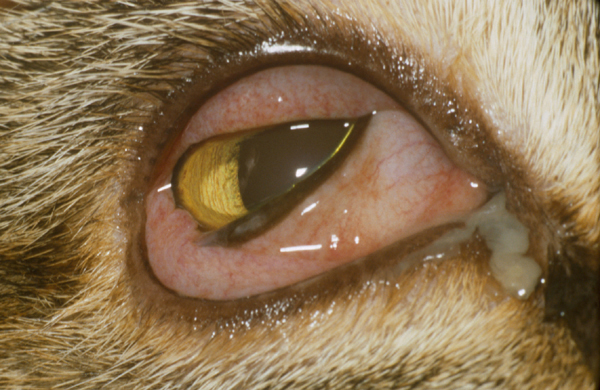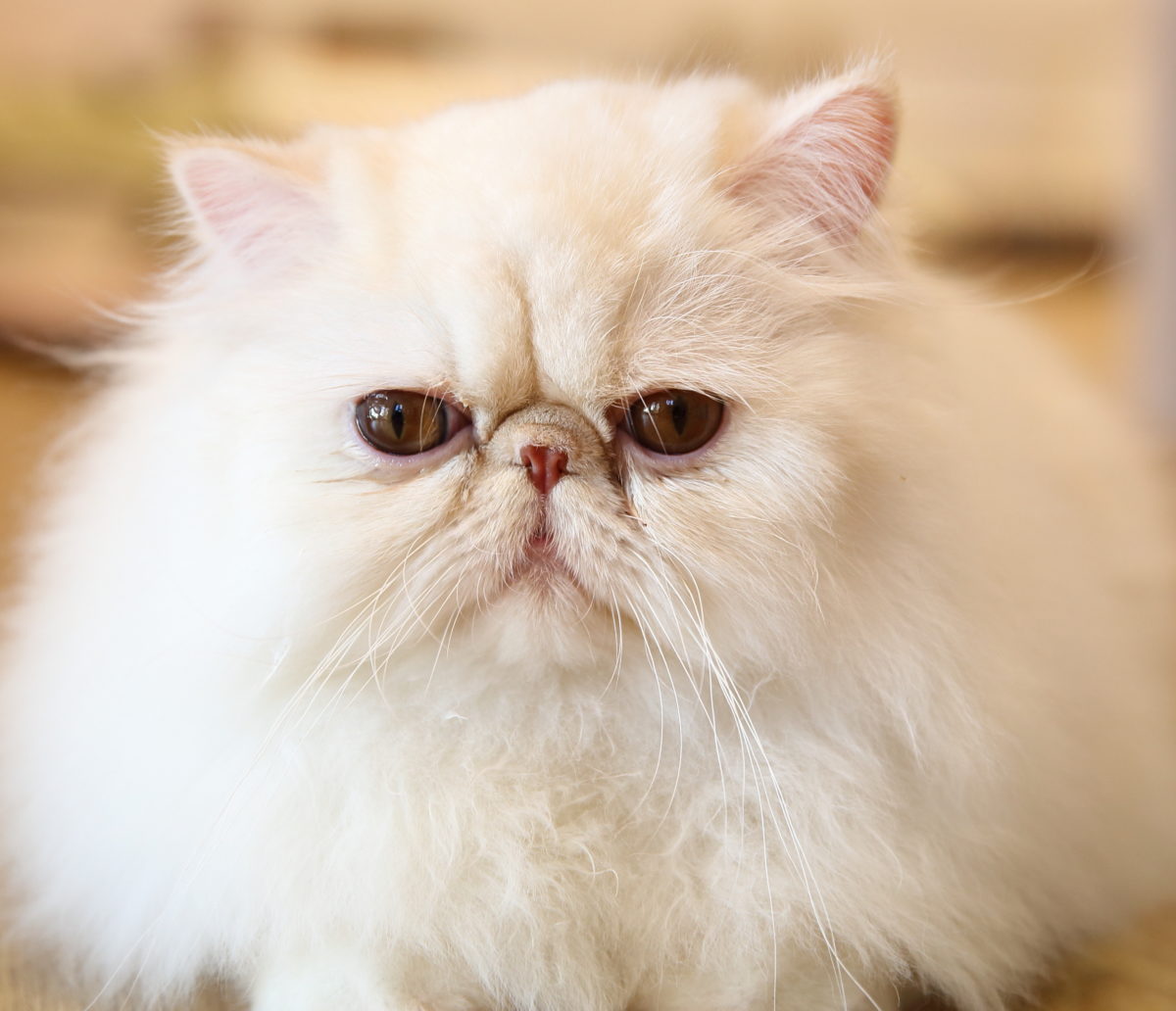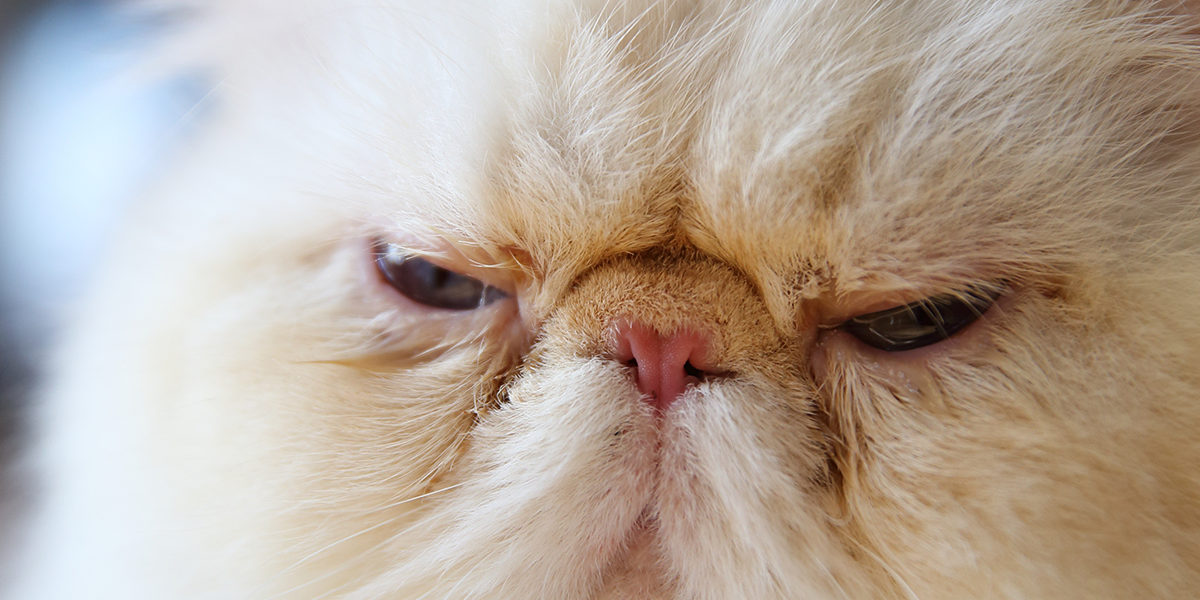Tears are constantly produced to help protect the eye. However, excessively teary eyes or production of a thicker discharge (mucous) from the eye, often known as ‘runny eyes’, can be a sign that something might be amiss.
Runny eyes can be a sign that your cat has an eye infection. Conjunctivitis is the most commonly diagnosed eye infection in cats. This is where infection leads to inflammation of the conjunctiva – the membrane that covers the inner surface of the eyelids and the white part of the eye itself. In addition to discharge from the eyes (which may dry to form a crust), the areas around the eyes are red and swollen (see picture). Conjunctivitis causes discomfort and pain, and if left untreated, can lead to eye damage, vision loss and even permanent blindness. Therefore, it is very important that the cat receives veterinary treatment.

Causes
Eye infections can be caused by injuries to the eye, or foreign objects in the eye (eg, dirt, sand). Newborn kittens may develop eye infections due to vaginal infections of the mother at the time of birth, as well as being born into an unsanitary environment. Viral or bacterial diseases can also lead to eye infections. For example, feline chlamydophilosis, a bacterial disease, primarily causes ocular (eye) infections and conjunctivitis. Usually a green or yellow discharge indicates there is a bacterial infection involved.
Runny eyes can be a sign of an upper respiratory infection, more commonly known as ‘cat flu’. Cat flu is most commonly (over 90% of cases) caused by infection with feline calicivirus or feline herpesvirus. Both of these viruses can lead to discharge from the eyes, and conjunctivitis. Other signs of cat flu include sneezing, nasal discharge, lethargy, inappetence, and fever.
Runny eyes may be caused by an eye ulcer. Ulcers can cause excessive tear production as well as mucous discharge. Other signs of an eye ulcer include red eyes, sensitivity to light, squinting or blinking, rubbing the eyes with the paw, the third eyelid remaining visible or cloudiness of the eye.
Runny eyes may indicate that the cat has an allergy. Cats can be allergic to a variety of substances, such as pollen, dust, mold, chemicals or foods. Other signs that a cat may be suffering from an allergic reaction include sneezing and itchiness.
Runny eyes in the form of an overflow of tears is known as epiphora. Epiphora occurs when there is a problem with the drainage from the eye to the nose via the tear ducts or the production of too many tears. The most common problem is a blockage of the duct which may be caused by rhinitis (inflammation of the lining of the nose) or sinusitis (inflammation of the lining of the sinuses) resulting a swelling of tissue in these areas. Overproduction of tears can occur due to the presence of small hairs on the undersurface of the eyelid. As well as excessively teary eyes, staining on the face caused by constant tears may be evident.
Some breeds are prone to epiphora, most notably brachycephalic (flat-faced) breeds which include most modern Persians and Exotic Shorthairs. Because of the shortening of the muzzle in these breeds, tear fluid can no longer drain normally into the nose, resulting in persistently runny eyes, and often staining on the face. These cats also have protruding eyes due to the changes in the shape of the skull, with a reduced ability to close the eyelids; this results in increased exposure of the cornea which can lead to keratitis (inflammation of the cornea).

Treatment
Treatment of runny eyes depends on the cause. A vet examination is required to diagnose the cause and give appropriate treatment (if applicable; eg, there is no treatment for runny eyes caused by face structure in brachycephalic cats). The earlier the treatment is given the better – the cat may be experiencing discomfort and pain, and as mentioned above, eye infections can lead to permanent damage to the eye and even blindness if left untreated.
Thank you for visiting our website, we hope you have found our information useful.
All our advice is freely accessible to everyone, wherever you are in the world. However, as a charity, we need your support to enable us to keep delivering high quality and up to date information for everyone. Please consider making a contribution, big or small, to keep our content free, accurate and relevant.
Support International Cat Care from as little £3
Thank you.
Donate Now


